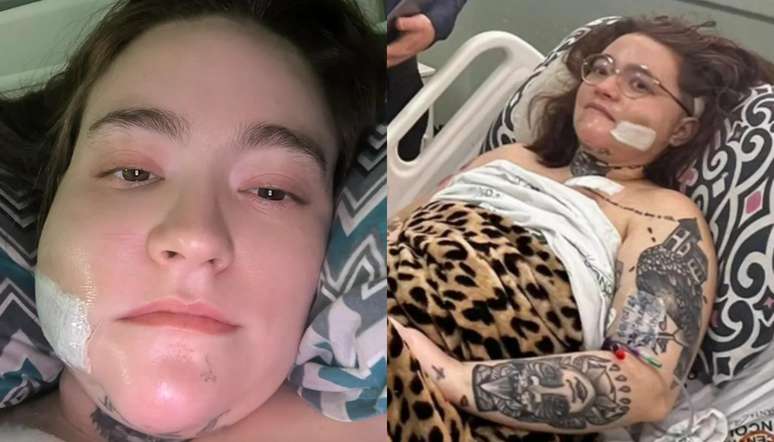The doctor responsible for the operation says that if the young woman does not improve, there are still other options: ‘We will wait for the clinical response’
Carolina Arruda, 27, a Brazilian who suffers from trigeminal neuralgia, a condition known as “the worst pain in the world”, underwent another stage of a medical procedure on Saturday that seeks to alleviate her symptoms (27).
The young woman, who had been suffering from the disease for more than 10 years, made the rounds on the web after opening an online crowdfunding asking for help to perform euthanasia in Switzerland, since in Brazil the procedure is a crime.
With the repercussions of the case, Carolina was invited to undergo treatment at the hospital department of Santa Casa de Alfenas, in the south of Minas Gerais, and accepted the invitation in the hope of an improvement.
Tiago da Silva Freitas, the neurosurgeon responsible for the latest surgery the young woman underwent, said that Carolina’s case is complex because in addition to having symptoms of trigeminal neuralgia, she also has associated neuropathic pain, secondary to the countless manipulations previously performed, especially due to the use of phenol.
During the operation last Saturday (27), anesthetics were injected into Carolina’s nerve and electrodes were implanted in the upper cervical region, to stimulate the posterior part, which communicates with the trigeminal nerve, and in the Gasser ganglion (on the side of the face), the base of the trigeminal nerve.
The intention is for these electrodes to produce electromagnetic currents to try to regulate the functioning of the nerve. “The function of the electrodes is to try to regulate the trigeminal nerve, which has altered its function, through electromagnetic stimuli that will regulate the abnormal electrical impulses that the nerve emits,” the specialist explained in a statement.
According to Tiago, the main risk of the procedures is infection of the system, which varies from 3% to 5%. In addition, there is also the risk of the electrodes moving, resulting in loss of stimulation.
“The surgery went as planned, that is, the electrodes were placed on the targets, without complications. Now we will do the programming and wait for the patient’s clinical response,” the professional said.
The options are not over
In an interview with Earth youThe neurosurgeon comments that if Carolina had a negative response, he would still have other options, such as implanting drug infusion systems, implanting a brain pacemaker for pain, and even injuring the trigeminal region of the brain.
The doctor emphasizes that all the possibilities of each therapy are being explored, in addition to the multidisciplinary treatment that every patient suffering from chronic pain must undergo.
“Psychological, physiotherapy and psychiatric support, since chronic pain causes a lot of suffering and led her to this attempt at euthanasia,” she says.
After the surgery, Carolina appeared on her social media to answer questions from her followers and said she was still in pain: “I’m in a lot of pain. I have neurology pain plus back pain from the spinal implant,” she wrote in her Instagram Stories.
Carolina also said that she uses a unique cell phone to control the intensity of the “shocks” coming from the electrodes. According to her, the device works 24 hours a day with a moderate intensity, which is intensified only during neuralgia attacks.

What are the worst pains in the world? See 6 almost unbearable
Source: Terra
Ben Stock is a lifestyle journalist and author at Gossipify. He writes about topics such as health, wellness, travel, food and home decor. He provides practical advice and inspiration to improve well-being, keeps readers up to date with latest lifestyle news and trends, known for his engaging writing style, in-depth analysis and unique perspectives.








